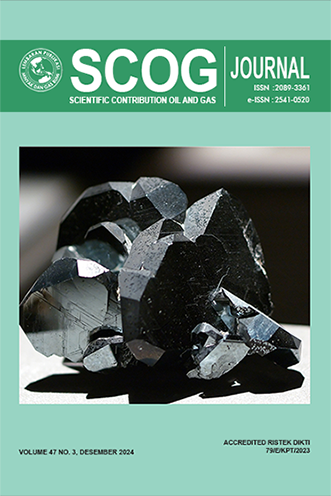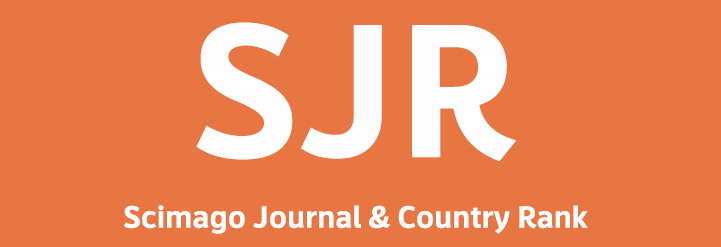Optimization of Crude Oil Transmission Process by Installing Electric Heat Tracing in Off-Plot Piping
DOI:
https://doi.org/10.29017/SCOG.47.3.1631Keywords:
Crude Oil, Transmission, Electric Heat Tracing, Pour Point Depressant, OLGAAbstract
Crude oil transmission is distributing crude oil from one plane to another. Problems that often occur in the crude oil transmission process are freezing or crystallization of paraffin when the temperature in the environment reaches the Pour Point Temperature. Usually, this can be overcome by injecting Pour Point Depressant into crude oil. However, using Pour Point Depressant is still ineffective if used continuously. This is because Pour Point Depressant can affect the quality of crude oil and increase environmental risks and if the transmission process is carried out on a large scale, it will also require large costs to meet these needs. Therefore, this research examined the application of constant wattage type Electric Heat Tracing as an alternative to Pour Point Depressant in the off-plot piping section, precisely in the PT ABC transmission pipe network. By carrying out transient simulations using OLGA version 2022.1.1 software, several scenarios for the most optimal Electric Teat Tracing installation in the crude oil transmission process were developed while minimizing the costs incurred. From the simulations carried out, it is known that the constant wattage type Electric Teat Tracing with a capacity of 3 x 100 kW can maintain the pipe temperature above the Pour Point Temperature value, namely 111ºF with 2 installation spots KP 1+700 to KP 3+200 and KP 5+800 to KP 7 +300. Apart from that, the use of Electric Heat Tracing is also more economical compared to Pour Point Depressant injection.
References
Ding, L., Zhang, J., & Lin, A. (2019). A deep-sea pipeline skin effect electric heat tracing system. Energies, 12(13). https://doi.org/10.3390/en12132466
Giffary, F., Alimin, A. A., & Susanto, B. H. (2021). The blending effect of Sumatran crude oil on wax deposition through flow assurance simulation. AIP Conference Proceedings, 2376(December). https://doi.org/10.1063/5.0063435
Kumolo, S. T., Yulizar, Y., Haerudin, H., Kurniawaty, I., & Apriandanu, D. O. B. (2019). Identification of metal porphyrins in Duri crude oil. IOP Conference Series: Materials Science and Engineering. https://doi.org/10.1088/1757-899X/496/1/012038
Muhidin, D., & Rose, H. M. (2020). Stimulasi Thermochemical dan Electrical Downhole Heating sebagai Solusi Alternatif Penanganan Wax Problem pada Sumur High Pour Point Oil: Studi Kasus Lapangan “X.†Jurnal Offshore: Oil, Production Facilities and Renewable Energy, 4(2), 16–25. https://doi.org/10.30588/jo.v4i2.836
Okta, V., Pratama, P., Husodo, A. W., & Tamimah, N. (n.d.). Analisa Tegangan dan Frekuensi Alami pada Redesign Sistem Perpipaan Line Outgoing Crude Oil. 2656, 128–131.
Pangindoman, M. I., Zikri, A., & Yuliati, S. (2022). ANALISIS DAMPAK BASE SEDIMENT & WATER TERHADAP LAJU KOROSI INTERNAL PIPELINE API 5L Gr B. Jurnal Kinetika, 13(03), 1–6. https://jurnal.polsri.ac.id/index.php/kimia/index
Prabowo. (2021). Peranan Penting Injeksi Pour Point Depressant ( Ppd ) Untuk Menjaga Aliran Crude Oil Saat Terjadinya Penurunan Temperatur Pada Export Line Lapangan As Achmad Suryo Prabowo Program Studi Teknik Perminyakan.
Pramana D.N, A. A., & Pagpa, T. A. (2023). Analisis Keefektifan Pour Point Depressant pada Waxy Crude Oil pada Lapangan TAP. Lembaran Publikasi Minyak Dan Gas Bumi, 57(1), 35–42. https://doi.org/10.29017/lpmgb.57.1.1312
Purwanto, H., Adiguna, A., Rustam, R. K., & Budiarto, B. A. (2020). Pemanfaatan Minyak Mentah (Crude Oil) Untuk Meningkatkan Stabilisasi Jalan Tanah Pada Daerah Makarti Jaya Kabupaten Banyuasin. Jurnal Deformasi, 4(2), 63. https://doi.org/10.31851/deformasi.v4i2.3546
Sianturi, A. S. (2018). Pemodelan Hidrolika Pipa Penyalur Minyak Mentah Terkait Dengan Perubahan Cuaca Untuk Memprediksi Terjadinya Pipeline Congeal Di PT. Chevron Pacific Indonesia.
Souas, F., Safri, A., & Benmounah, A. (2021). A review on the rheology of heavy crude oil for pipeline transportation. Petroleum Research, 6(2), 116–136. https://doi.org/10.1016/j.ptlrs.2020.11.001
Downloads
Published
Issue
Section
License
Copyright (c) 2024 SCIENTIFIC CONTRIBUTIONS OIL AND GAS (SCOG)

This work is licensed under a Creative Commons Attribution 4.0 International License.
Authors are free to Share — copy and redistribute the material in any medium or format for any purpose, even commercially Adapt — remix, transform, and build upon the material for any purpose, even commercially.
The licensor cannot revoke these freedoms as long as you follow the license terms, under the following terms Attribution — You must give appropriate credit , provide a link to the license, and indicate if changes were made . You may do so in any reasonable manner, but not in any way that suggests the licensor endorses you or your use.
No additional restrictions — You may not apply legal terms or technological measures that legally restrict others from doing anything the license permits.














